Comprehensive Guide to Ash Pest Control Techniques
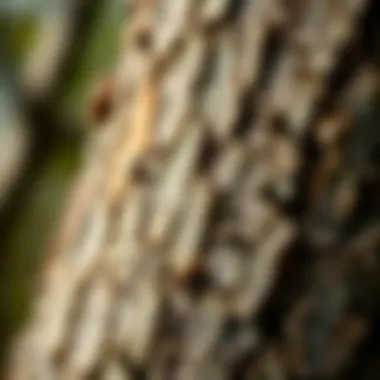
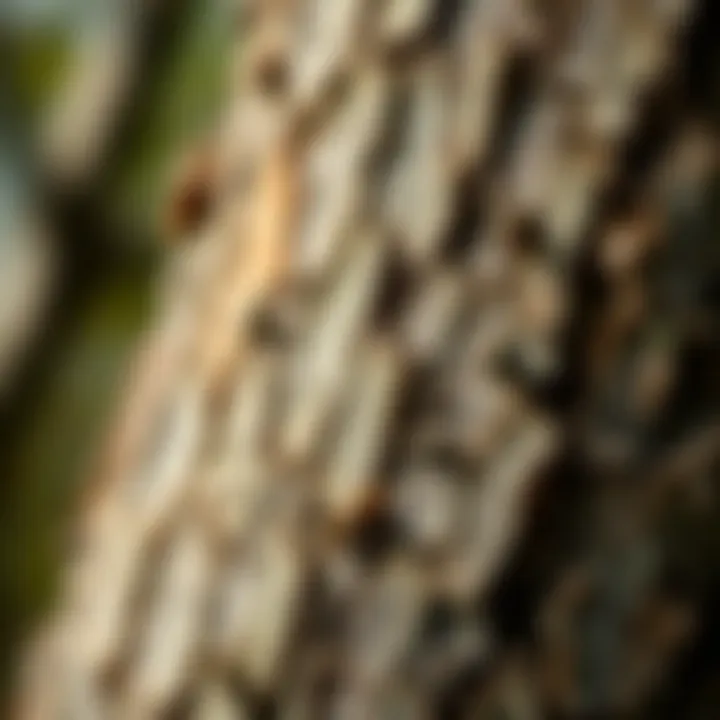
Intro
When it comes to maintaining the serene beauty of your garden, particularly when you have ash trees, pest control can feel like navigating through a maze. Ash trees, with their striking canopies and sturdy trunks, are often at risk from unwelcome pest visitors, which can throw a wrench in any homeowner's plans. This guide aims to illuminate the intricacies of managing these pesky intruders, providing not just knowledge, but actionable strategies that blend seamlessly into your lifestyle.
Understanding the types of pests that commonly target ash trees is the key to keeping your greenery thriving. We will sort through the clutter of information and unearth specific identification methods, pest prevention tips, and treatment options that empower you to take charge of your home’s ecosystem. By demystifying this topic, we help you not just in combatting existing infestations, but also in fortifying your ash trees for the future.
Pest Identification
Identifying pests is akin to being a detective in your own backyard. The sooner you can spot a problem, the better prepared you are to tackle it effectively. Here, we explore some of the common assailants that threaten your ash trees.
Detailed Descriptions of Common Pests
- Emerald Ash Borer: Perhaps the most notorious pest, this beetle has a metallic green sheen and a penchant for boring into the bark of ash trees, creating S-shaped tunnels that disrupt the tree’s nutrients.
- Ash Leaf Curl Aphid: A tiny soft-bodied insect, the ash leaf curl aphid, can be easily identified by their rounded bodies and the way they cluster along stems. They suck sap and can cause leaves to curl and distort.
- Ash Plant Bug: These bugs can be a bit more elusive, camouflaged against the foliage. They usually target the underbelly of leaves, sucking out juices and leading to discolored spots.
Signs and Symptoms of Infestations
While the pests can sometimes evade your eye, they often leave behind clues that reveal their presence:
- Discolored Leaves: A change in leaf color or curled leaves can signal aphid activity.
- Woodpecker Activity: If woodpeckers are frequently pecking at your ash trees, it usually indicates that they are after the insects hiding beneath the bark.
- Frass: Commonly known as insect excrement, this material can often be found below infested trees and can confirm the presence of boring insects like the emerald ash borer.
"An ounce of prevention is worth a pound of cure." Understanding what pests might invade your ash trees can save you from significant headaches down the line.
Prevention Strategies
The best defense is a good offense. Preventative strategies can significantly minimize your pest problems. Here’s how to keep your ash trees healthy and pest-free:
Home Maintenance Tips for Pest Prevention
- Prune Regularly: Trimming your trees helps increase airflow, reduces overcrowding, and can deter infestations by removing easy access points for pests.
- Inspect Regularly: Make a habit of checking your trees—especially during vulnerable times like spring and early summer. Look for any signs of distress, and act promptly.
- Mulch Correctly: Using mulch can help retain moisture in the soil, but be cautious. Pests can sometimes find refuge in thick layers of mulch, so keep it at recommended depths.
Natural Deterrents and Barriers
The power of nature should not be overlooked. Some options include:
- Neem Oil: This natural repellent can deter pests if sprayed regularly. It disrupts the life cycle of pests and acts as a barrier.
- Companion Planting: Growing certain plants near ash trees, like marigolds, can naturally deter common pests.
- Insecticidal Soap: This is often effective against soft-bodied insects like aphids and is non-toxic to plants.
Treatment Options
When prevention measures falter, it’s crucial to know your treatment options. Decision-making here can have lasting implications for the health of your ash trees.
Overview of Chemical vs. Natural Treatments
Natural treatments often appeal to environmentally conscious homeowners. On the flip side, chemical options may offer faster results, but they come with their own set of risks. It’s essential to weigh the pros and cons:
- Natural Treatments: Typically gentler on the ecosystem. Examples include essential oils, diatomaceous earth, and botanical pesticides. They require more frequent application but are suitable for sustainable gardening practices.
- Chemical Treatments: These can swiftly eliminate populations but may harm beneficial insect species and lead to resistance over time. Products containing imidacloprid are often used against borers.
Step-by-Step Guides for DIY Treatments
- DIY Neem Oil Solution: Mix four tablespoons of neem oil in a gallon of water with a few drops of dish soap. Spray this solution on affected areas, focusing on the underside of leaves.
- Diatomaceous Earth: Sprinkle food-grade diatomaceous earth around the base of your tree and on the leaves. It’s effective in dehydrating soft-bodied insects.
- Insecticidal Soap: Create a simple mixture by blending one tablespoon of dish soap in a quart of water. Spray directly onto the pests where you find them.
Taking a proactive approach to protecting your ash trees not only preserves their beauty but also contributes to the health of your local ecosystem. Through pest identification, prevention strategies, and thoughtful treatment options, homeowners can approach ash pest control with confidence.
Prelims to Ash Pests
Understanding the menace that ash pests present is crucial for homeowners and professionals alike. These pests can wreak havoc on ash trees, leading to significant ecological and economic implications. In this article, we will dive into the various challenges posed by these pests, their identification, and effective management strategies.
Defining the Threat
Ash pests represent a pervasive threat to the health of ash tree populations. Their impact can cascade through local ecosystems, causing loss of biodiversity and altering habitats. Moreover, infestations can lead to the diminishing aesthetic value of residential landscapes, affecting property values. Understanding this threat is the first step in managing it effectively. Recognizing how these pests operate not only informs treatment options but also illuminates why early detection and intervention are vital.
Common Species of Ash Pests
Getting acquainted with the species that target ash trees can help in better pest management. Each has distinct characteristics that warrant attention.
Emerald Ash Borer
The Emerald Ash Borer is perhaps the most notorious among ash pests. This beetle, native to Asia, has become a major concern across North America. One of its key characteristics is its shimmering green hue, which can easily be overlooked by the untrained eye. Unfortunately, its beauty belies its destructive nature. This pest contributes to tree mortality and can decimate ash populations in a short span of time.
Unique Feature: A unique attribute of the Emerald Ash Borer is its ability to tunnel beneath the bark of the ash tree. This behavior disrupts the tree's ability to transport nutrients and water, ultimately leading to its demise. While some may argue that its presence encourages awareness and research in pest management, the overwhelming negative impact on trees cannot be overlooked.
Ash Leafcutter Bee
The Ash Leafcutter Bee stands out not as a destroyer but as a curious insect that plays a dual role in ash ecosystems. Although primarily known for its pollination efforts, it can be an indicator of a compromised tree health. One notable characteristic is its leaf-cutting behavior, which it uses to create nests for its offspring. This behavior can sometimes stress the tree, leading to complications down the line.
Unique Feature: What sets the Ash Leafcutter Bee apart is its role in both harming and benefiting ash trees. While its actions can put a strain on certain trees, the pollination it provides is undeniably valuable. This dual nature presents a complexity in pest management that can be both advantageous and detrimental, depending on the specific context.
Ash Bark Beetles

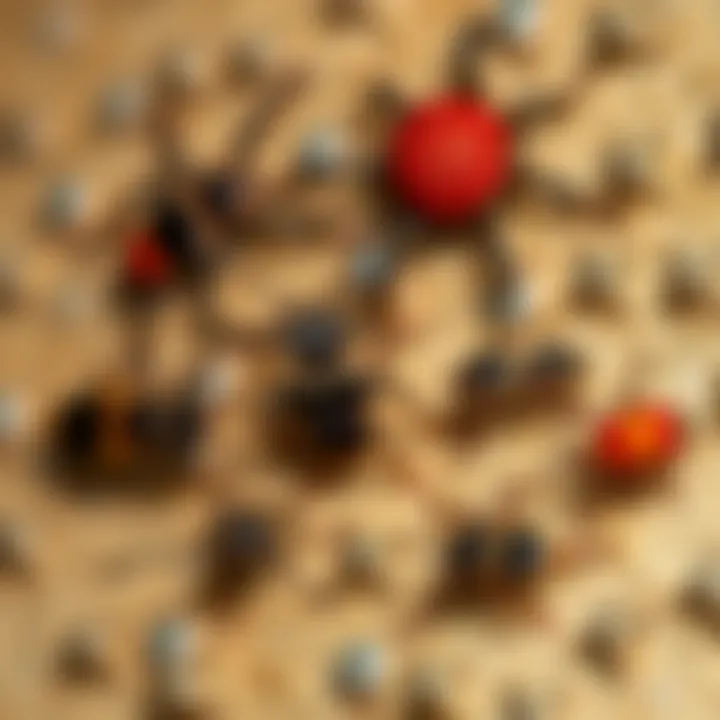
Another significant threat comes from the Ash Bark Beetles. These pests are effective in causing significant damage to ash trees, as they feed on the inner bark and disrupt the tree's vascular system. They often go unnoticed until the damage is severe. They can create extensive galleries beneath the bark, further endangering the tree's health.
Unique Feature: The Ash Bark Beetle is particularly skilled at adapting to various conditions, which makes treating infestations challenging. While they can serve as a food source for some predators, their destructive tendencies can lead to extensive tree loss, necessitating careful monitoring and control measures.
Understanding these common species aids in the development of a strategic approach for managing ash pests and highlights the importance of vigilance and early action.
Identifying Ash Pests
Identifying pests that affect ash trees is a foundational step in effective pest management. Not only does it allow homeowners and professionals to recognize the presence of these intruders, but it also helps in determining the best course of action to take. Knowing what pests are at play, how they behave, and the type of damage they inflict contributes to more effective and timely control measures, ultimately safeguarding both tree health and landscape integrity.
Signs of Infestation
Damage Patterns
Damage patterns are perhaps the most visible indicator of pest activity in ash trees. Each pest leaves behind distinctive marks, which can range from holes and tunnels in the bark to discolored leaves. For instance, the infamous Emerald Ash Borer manifests its presence by creating D-shaped holes in the bark when it exits. Recognizing these patterns in a prompt manner is beneficial as it helps in taking immediate action. Early detection allows for more flexible treatment options and reduces the risk of extensive damage.
The unique feature of damage patterns is that they tend to be specific to certain pests. This specificity provides additional clarity in identifying which pest is causing the problem. However, it's crucial to note that reliance solely on damage patterns can sometimes lead to misdiagnosis since environmental factors may mimic certain pest behaviors.
Physical Cues
Physical cues, such as unusual spotting or deformation on leaves, often signal the presence of pests. These cues can serve as a red flag, prompting closer inspection. Ash bark beetles, for example, cause the bark to crack and flake, creating a distinctive look that experienced caretakers can easily recognize. The advantage of focusing on physical cues is they provide a direct line of sight to the problem at hand, making it easier to tailor a response.
These cues are remarkable for their clarity and straightforwardness. However, one downside is that some pests may not easily show noticeable physical cues until significant damage has already occurred. This underscores the importance of regular monitoring and observation of ash trees.
Presence of Frass
When dealing with pest infestations, frass—essentially insect excrement—is a vital sign of trouble. The presence of frass around the base of the tree or within the bark is indicative of wood-boring pests such as the Emerald Ash Borer. This recent discovery of how important frass can be illustrates its role as an early detection system.
Frass is quite telling, often resembling sawdust and can vary in size and texture based on the pest in question. The explicit presence of frass not only confirms a pest’s existence but also helps narrow down which type might be infesting the tree. On the flipside, while the frass offers useful insights, it might sometimes disguise itself within normal leaf litter, making it potentially overlooked.
Differentiating Pests
Visual Identification
Visual identification of ash pests brings forth the important trait of recognizing specific characteristics unique to each pest. This practice involves observing color patterns, body shapes, and sizes that distinguish one pest from another. For instance, a seasoned observer might note that the body of the Emerald Ash Borer has a metallic green hue, while an Ash Leafcutter Bee is characterized by its somewhat more robust frame.
This method of identification is popular among both amateurs and professionals because it does not require specialized tools or equipment, only careful observation. One downside is that the less experienced might struggle with this method, potentially leading to misidentification, which can compound the pest issue.
Behavioral Traits
Understanding the behavioral traits of ash pests can also play a part in effective identification. Certain pests exhibit specific behaviors that can indicate their presence, such as the Ash Leafcutter Bee’s tendency to create circular holes as they gather material for nest building. Observing these behaviors contributes to a larger understanding of the pest lifecycle and habits.
This approach can provide critical insights swiftly, but it does require a period of careful observation. Newcomers in pest control might find it challenging to differentiate between the actions of various pests, leading to potential confusion.
Lifecycle Stages
The lifecycle stages of ash pests encompass the development cycles, revealing how they grow and shift from one phase to another—egg, larva, pupa, and adult. Knowing where in the lifecycle a pest is can inform the timing of treatments effectively. For example, targeting larvae during the early development stage may yield more favorable results than waiting until they become adults.
This method stands out because it allows for preventative measures based on a pest’s lifecycle timing, leading to more successful interventions. However, the drawback is that it requires in-depth knowledge of the specific pest’s lifecycle, which could be daunting for some. Understanding these different stages is essential in shaping a clear strategy for pest control.
Recognizing the signs of infestation early on and learning to differentiate between species plays a crucial role in maintaining healthy ash trees. Actively monitoring and utilizing this information can save time and cost in the long run.
Prevention Strategies for Ash Trees
Preventing pests from invading ash trees is crucial for maintaining their health and longevity. Effective prevention strategies not only safeguard the trees but also reduce the need for aggressive treatments later on. Healthier trees are naturally more resistant to pests and diseases. Implementing solid prevention methods minimizes infestation risks and helps to create a balanced ecosystem in which ash trees can thrive.
Cultural Control Methods
Cultural control methods involve practices that enhance the overall well-being of ash trees, creating an environment less conducive to pest infestations. These strategies are rooted in understanding tree biology and providing optimal growing conditions.
Maintaining Tree Health
Maintaining tree health is the cornerstone of prevention strategies for ash trees. Healthy trees are resilient, showing better resistance to pests. One key characteristic of this approach is regular monitoring of tree conditions. This includes assessing for signs of stress like yellowing leaves or wilting branches, which may hint at underlying issues.
The benefit of maintaining tree health lies in its long-term sustainable approach — it encourages natural toughness. One unique feature of this practice is its holistic nature, focusing on nutrient management and appropriate watering practices. However, over-fertilization can damage roots or lead to excessive growth, which might attract pests. Striking a balance is key.
Proper Pruning Techniques
Proper pruning techniques play a pivotal role in an effective pest management strategy. By selectively removing branches, one can improve airflow and sunlight penetration for the tree. This key characteristic fosters a robust growing environment that helps prevent fungal infections and pest infestations.
A popular choice for many homeowners and arborists alike, proper pruning reduces overcrowding, which can lead to weak branches and increased pest risk. A unique feature of this technique is the timing; pruning during the dormant season can minimize stress to the tree while effectively controlling its shape and health. However, improper pruning can lead to wounds that invite pests, so knowledge of correct methods is essential.
Soil Management
Soil management is another essential cultural control method, as the health of a tree heavily relies on its root system. Promoting good soil quality ensures that trees receive adequate nutrients and minimizes the likelihood of pest infestations. The key characteristic of soil management is ensuring that the soil is well-aerated and has the right pH balance, between 6.0 and 7.0 for ash trees.
Its benefit lies in establishing a healthy foundation; rich, diverse soils nurture strong root systems. Soil management incorporates practices like mulching, which conserves moisture and suppresses weeds. A unique feature of this method is its adaptability, allowing for gradual adjustments based on tree response. However, improper amendments can cause nutrient imbalances, so constant monitoring is necessary to ensure optimal conditions.
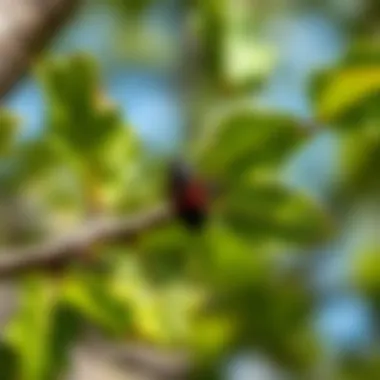
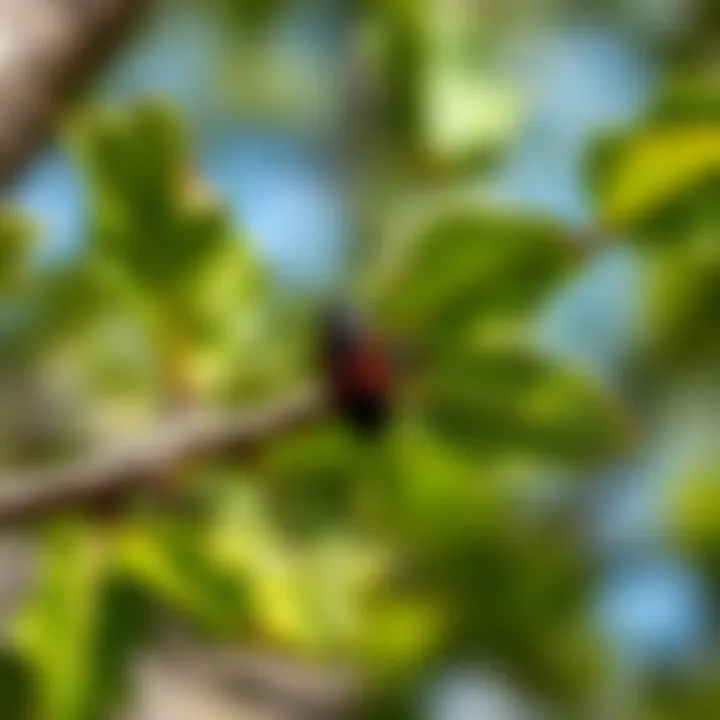
Planting Techniques
Adopting innovative planting techniques can significantly enhance the resilience of ash trees against pest problems. These methodologies encourage biodiversity, encouraging a natural ecosystem to thrive and ward off pests effectively.
Diversity in Planting
Diversity in planting involves interspersing various plant species alongside ash trees. This practice creates a dynamic environment where pests are less likely to establish themselves due to the varied presence of natural deterrents. The key characteristic of this method is its focus on biodiversity, promoting a multi-species landscape that attracts beneficial predators.
This approach is beneficial as it mimics natural ecosystems, reducing the dependency on chemical treatments. A unique feature is that it can create a visually appealing garden space, while also improving soil structure over time. The downside is that proper planning and selection of compatible species are crucial to avoid competition for resources.
Companion Planting
Companion planting is a strategy where specific plants are grown together to enhance protective and nutrient dynamics. This key characteristic helps bolster the health of both ash trees and their companions. For instance, planting herbs like basil or marigold nearby can deter specific pests with their scent and properties.
This method is popular due to its simplicity and effectiveness in pest control while promoting growth. A unique feature of companion planting is its ability to lower pest populations naturally, reducing the need for pesticides. Still, success depends on understanding the relationships between plant species, as incompatible combinations can lead to poor growth.
Use of Resistant Varieties
Using resistant varieties focuses on selecting ash tree species or cultivars that show natural resistance to common pests. This practice aims for a key characteristic of durability and adaptability, which can save time and resources in pest management.
This strategy is a beneficial approach for those looking to establish healthy landscapes with minimal intervention. A unique feature is that resistant varieties are often chosen based on studies that confirm their performance against specific pests. While this method may limit options for aesthetic preferences, the payoff in less pest-related stress can be well worth it.
Treatment Options for Ash Pest Infestations
Addressing infestations of ash pests is no small feat. These little critters can cause significant damage to your trees if left unchecked. In this section, we will explore various treatment options available, dividing them into natural remedies and chemical treatments. By understanding these methods, homeowners can make informed decisions about properly managing ash pests while ensuring the health of their trees.
Natural Remedies
Natural remedies often provide a less invasive approach to pest control. They emphasize working with nature rather than against it, which can be appealing for those looking to maintain an environmentally friendly garden.
Essential Oils
Essential oils are increasingly recognized for their effectiveness in repelling pests. These concentrated plant extracts can be rich in compounds that deter unwanted insects. For example, oils like neem and peppermint not only help in keeping pests at bay but can also promote overall tree health.
A major characteristic of essential oils is their scent. This aroma, while pleasant to us, can be off-putting to pests. Such repellents are especially popular among organic gardeners looking for solutions that minimize harmful residues on their vegetation. However, while essential oils possess numerous benefits, they require careful application. Overuse can lead to harm, and in some cases, their efficacy depends on the precise formulation and method used.
Biological Controls
Biological controls lean heavily on the natural enemy concept. Introducing beneficial insects, such as ladybugs or parasitic wasps, can help reduce pest populations. This method fosters a more balanced ecosystem within your garden.
A key feature of biological controls is sustainability. They not only help reduce pest numbers but also enhance biodiversity. By creating a welcoming environment for these allies, homeowners can see a long-term impact on pest control. However, it's worth mentioning that this method may take longer to yield noticeable effects compared to traditional treatments. Not all pests have suitable natural enemies, which could limit this approach's effectiveness.
Insecticidal Soaps
Insecticidal soaps are another viable option for treating ash pests. Made from natural plant oils and fats, these soaps are safe to use and can effectively suffocate soft-bodied insects.
One of the most attractive aspects of insecticidal soaps is their ease of use. Homeowners need only mix the soap with water and spray it onto the affected plants. Moreover, these soaps break down quickly in the environment, minimizing any long-term residue that could affect beneficial insects. However, it's essential to apply them directly onto the pests; otherwise, they may not be as effective. As with any treatment, it's prudent to test a small area before wide application.
Chemical Treatments
When natural remedies fall short, chemical treatments can provide a more aggressive approach. These methods can yield quick results, but they also require careful consideration regarding safety and environmental impact.
Systemic Insecticides
Systemic insecticides are absorbed by the plant and circulate through its tissues. This means that when pests feed on the plant, they also ingest the insecticide, providing an effective means of control. This method is particularly good for severe infestations.
The characteristic advantage of systemic insecticides is their lasting effectiveness. Once applied, they can remain in the plant for weeks or even months, offering extended protection. However, they can pose risks to non-target organisms. It's crucial to select products that minimize harm to beneficial species and to follow application guidelines carefully.
Contact Insecticides
Contact insecticides work by targeting pests when they come into direct contact with the chemical. These treatments generally provide quicker results than systemic options, making them suitable for immediate action against visible infestations.
The immediacy of contact insecticides is one of their defining traits. They can significantly reduce pest populations within hours. However, their effects are temporary; repeat applications may be necessary, especially in environments with high pest pressure.
Safety Precautions
Safety precautions are vital when using any form of chemical treatment. This includes wearing protective gear, ensuring proper ventilation, and adhering strictly to application instructions. This not only protects the user but also helps safeguard the surrounding ecosystem from unintended exposure.
An important aspect of these precautions is to understand the safe re-entry intervals. After application, it's often advised to keep people and pets away from the area for a specific period. Being aware of potential hazards can help maintain a healthy growing environment while still managing pests efficiently.
Long-term Management Practices
Long-term management practices are crucial for maintaining the health of ash trees and effectively controlling pests that threaten them. Focusing on sustainable techniques not only helps to mitigate pest problems over time but also enhances the resilience of ash ecosystems. Ash trees are an essential part of many environments, supporting biodiversity and offering shade, beauty, and resources. Hence, understanding how to manage these trees in the long run provides multiple benefits, including improved tree health, reduced pest populations, and enhanced community involvement in ecosystem management.
Integrated Pest Management (IPM)
Integrated Pest Management (IPM) combines different strategies and practices for more effective pest management while minimizing the risks to human health and the environment. This method emphasizes the importance of understanding pest behavior and ecology while balancing long-term control measures with the immediate action needed to address an infestation.


Monitoring and Assessment
Monitoring and assessment are fundamental components of Integrated Pest Management. By regularly evaluating the health of ash trees and observing pest activity, homeowners can gain critical insights into the well-being of their trees. This proactive approach enables early detection of pest infestations, preventing larger outbreaks that can prove costly and damaging.
- Key Characteristic: Continuous observation allows for timely interventions to be made.
- Benefits: Helps maintain tree health, reduces chemical application, and fosters a more natural ecological balance.
- Unique Feature: Utilizes tools such as sticky traps and visual inspections to gather data. This monitoring can have its challenges, including the need for consistent effort and knowledge about pest life cycles, but the advantages far outweigh these difficulties in maintaining overall health.
Threshold Levels for Action
Threshold levels for action set specific criteria for when to address a pest problem, based on damage levels and pest population densities. These thresholds help guide decisions on whether intervention is necessary, reducing unnecessary treatments and promoting sustainable practices.
- Key Characteristic: Relies on scientific research to determine acceptable pest levels.
- Benefits: Economically beneficial, minimizing unnecessary pesticide use, which can harm beneficial organisms.
- Unique Feature: Establishes a balance between economic loss and pest presence, ensuring that actions are taken only when required. However, the drawback can be misjudging threshold levels due to lack of experience, leading to delayed action that could risk greater damage.
Cumulative Impact Considerations
Cumulative impact considerations involve evaluating how various pest management practices affect the ecosystem over time. This aspect incorporates understanding how chemical and non-chemical treatments can influence pest dynamics, plant health, and soil quality.
- Key Characteristic: Looks at the long-term effects of pest management choices.
- Benefits: Encourages sustainable practices and promotes better ecological health in the surrounding environment.
- Unique Feature: Requires a holistic view of pest management that weighs immediate actions against long-term consequences. It can be complicated, as it often entails weighing immediate benefits against future risks, leading to challenges in decision-making for homeowners.
Ecosystem-Based Approaches
Ecosystem-based approaches take a broader perspective on pest control, focusing on the interactions within an ecosystem rather than treatment of individual pests. These methods aim to enhance the overall health of the environment, reducing pest outbreaks by promoting a balanced ecosystem.
Encouraging Beneficial Insects
Encouraging beneficial insects is one of the simplest yet effective ecosystem-based approaches. These insects, such as ladybugs and lacewings, serve as natural predators to common ash pests, suppressing their populations without harmful chemicals.
- Key Characteristic: Non-invasive strategies for pest management.
- Benefits: Reduces reliance on pesticides, promoting biodiversity and ecological balance.
- Unique Feature: These contributions can enhance pollination of other plants, providing broader environmental benefits. However, fostering beneficial insect populations requires some effort and investment in maintaining their habitats.
Habitat Restoration
Habitat restoration involves reviving and maintaining natural environments that support a diversity of plant and animal life. Healthy ecosystems have a natural defense against pests, helping to stabilize ash tree populations against invasive species.
- Key Characteristic: Focused on rebuilding natural systems rather than applying treatments.
- Benefits: Increases biodiversity and enhances resilience among ash trees and surrounding flora.
- Unique Feature: Includes strategies such as removing invasive species and planting native flora. While this may necessitate long-term commitment and resources, the returns on ecological stability can be significant.
Community Involvement
Community involvement incorporates local citizens in the management and preservation of ash tree ecosystems. Engaging the community can lead to shared responsibility and a greater understanding of pest control methodologies. When local residents participate, they build a collective approach that positively impacts their environment.
- Key Characteristic: Harnessing community knowledge and resources to strengthen pest management efforts.
- Benefits: Active community participation increases awareness and fosters unity in managing local biodiversity.
- Unique Feature: Local workshops and education programs can generate awareness among homeowners about the importance of healthy ecosystems. However, relying on community participation can sometimes lead to inconsistent efforts depending on interest levels.
Debunking Myths in Pest Control
Pest control is often shrouded in a fog of misconceptions and myths. These myths can lead to ineffective practices, misinformed choices, and ultimately, more harm than good for our gardens and landscapes. For homeowners and professionals alike, separating fact from fiction becomes crucial to effectively manage ash pests. This section aims to dismantle popular beliefs, giving the readers a clearer picture of pest control realities.
Myth 1: Natural Means are Always Safe
The belief that natural pest control methods are inherently safe is one that requires closer examination. Many assume that because a product is labeled as ‘natural,’ it carries no risk. However, this is far from the truth.
For example, consider the neem oil, a popular natural insecticide. While it can effectively deter pests, using it incorrectly can still harm beneficial insects. Bumblebees, for instance, are vital pollinators that can be affected negatively. Furthermore, natural doesn’t always mean gentle; substances like rotenone, while derived from plants, are highly toxic to aquatic life.
In reality, any pest control method, whether natural or synthetic, demands cautious usage and proper understanding. It’s essential to read labels, follow application guidelines closely, and think about the broader ecosystem. Homeowners should lean into knowledge to ensure that their pest management strategies do not inadvertently turn harmful.
Myth 2: Pesticides Are Ineffective
Another widespread belief is that pesticides, especially synthetic ones, are ineffective or contribute little to real pest management. This notion often stems from anecdotal experiences or a general aversion to chemicals used in gardens. However, this perspective overlooks crucial facts.
Pesticides are designed to target specific pest species, making them quite effective when used correctly. A well-formulated systemic insecticide can penetrate plant tissues, offering a long-term solution to an ongoing infestation. It's essential to realize that the effectiveness of a pesticide correlates strongly with its correct selection and application. For instance, applying a contact insecticide on a tree where emerald ash borers are buried beneath the bark will yield little result in pest reduction, while a systemic option might be a game changer.
Still, caution must be exercised. Improper usage can lead to resistance in pest populations or harm to non-target organisms. Homeowners should understand that pesticides are tools, and like any tool, they require skill and knowledge to wield effectively. Knowledgeable application following safety guidelines and integrated pest management practices enhances their effectiveness while protecting the wider environment.
In summary, dispelling myths surrounding pest control empowers homeowners to make better choices. By understanding the real effectiveness and potential drawbacks of both natural and chemical methods, individuals can foster healthier ecosystems around their ash trees.
End
In the grand scheme of maintaining a healthy ecosystem, understanding ash pest control stands as a pivotal concern for both homeowners and those in the horticultural sector. This subject isn't just a fleeting trend but a matter of preserving our urban and rural environments stacked with ash trees—a fundamental part of our landscapes. The information derived from this article circles around several important aspects, such as the identification of ash pests, strategies for prevention, and actionable treatment options that blend both natural and chemical means.
One of the key elements to consider is the recognition that ash trees, while resilient, are prone to various pests that may jeopardize their health. Knowing the common species that tend to invade these trees, and understanding their signs, allows homeowners to act swiftly and decisively. This proactive approach can save ash trees from irreversible damage, which many property owners cherish for their shade, aesthetics, and habitat for local wildlife.
Moreover, practicing integrated pest management—an umbrella term that envelops preventative measures, monitoring, and responsive actions—illustrates a commitment to sustainability and environmental integrity. This holistic perspective underscores that pest control is not just about extermination but about creating balance within the natural ecosystem.
Summary of Key Points
- Identifying Ash Pests: Homeowners should familiarize themselves with common ash pests like the Emerald Ash Borer and their distinctive signs, such as leaf damage and bark discoloration.
- Prevention Strategies: Implementing cultural control methods and proper planting techniques can significantly reduce the risks of infestation.
- Treatment Options: Whether opting for natural remedies like essential oils or chemical treatments such as systemic insecticides, being knowledgeable about the effects and application is vital for effective pest control.
- Debunking Myths: Dispelling common myths associated with pest control is necessary for making informed decisions, particularly around the safety and efficacy of various methods.
Future Directions in Ash Pest Control
The realm of ash pest control is continually evolving as researchers, entomologists, and environmentalists conjoin their efforts to tackle existing and emerging threats. One significant trend brewing in this space emphasizes the role of technology in pest management. New tools, such as mobile applications for pest identification or data-driven analytics, have the potential to revolutionize how tree health monitoring is approached.
Moreover, continued research into the ecological relationships between ash pests and their natural predators can inspire fresh biological control methods. For instance, encouraging the presence of native insects that naturally prey on ash pests offers a renewable solution not solely dependent on chemicals.
Also, community-driven initiatives aimed at the restoration of habitats and educating the public about the importance of ash trees can further punctuate the need for widespread awareness and concerted action. The future beckons a collaborative effort that blends science, community engagement, and innovative strategies to ensure that ash trees thrive for generations to come.
In addressing these facets of ash pest control, the importance of awareness, preparation, and adaptability becomes clear. Each piece of information serves not just as a method but as a stepping stone toward securing a healthier environment for cherished ash trees.



